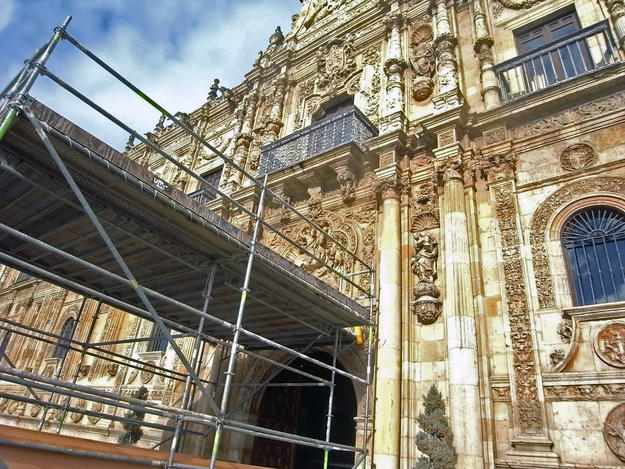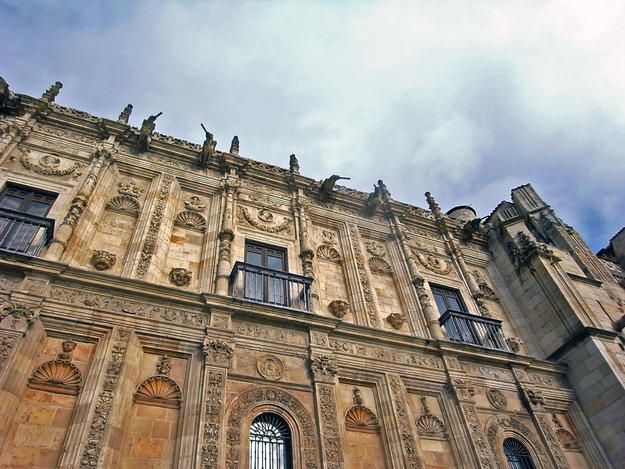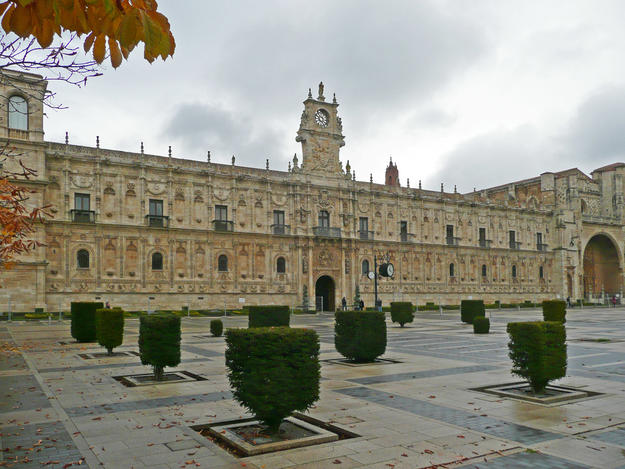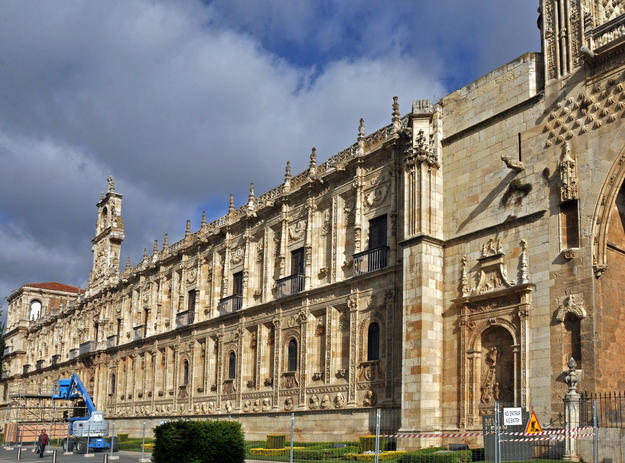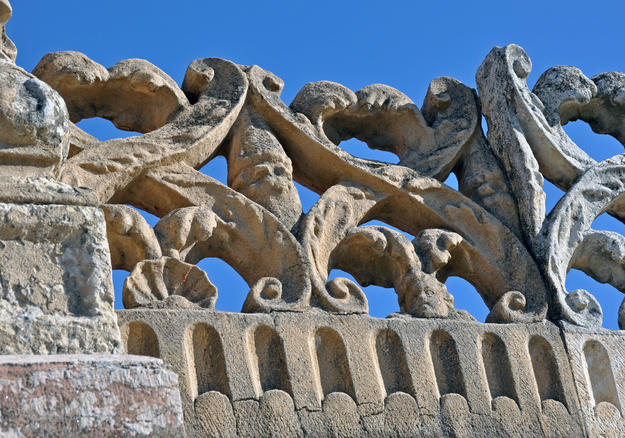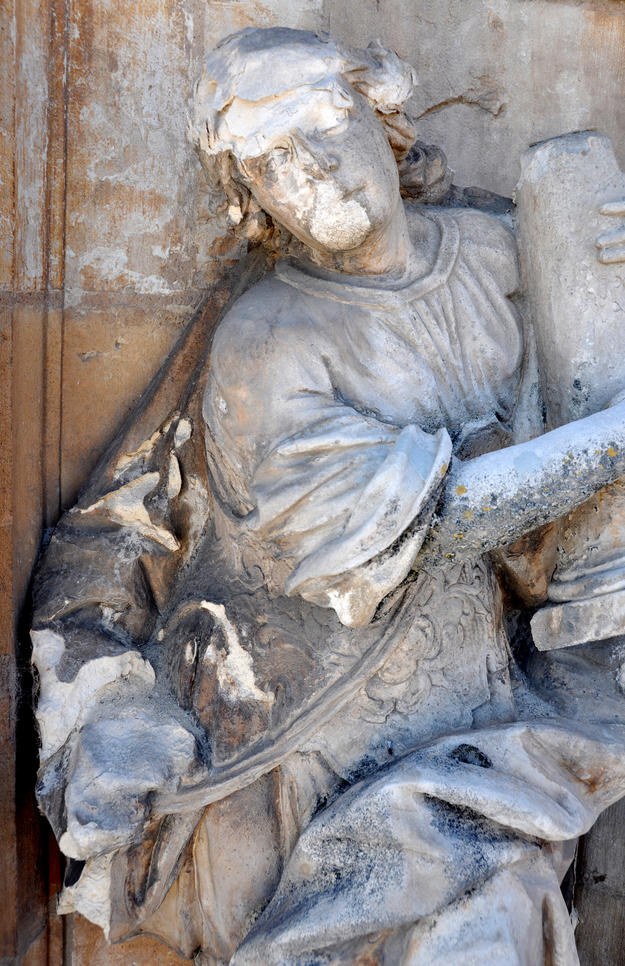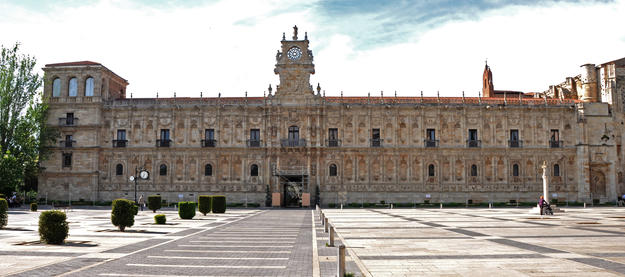Parador de León (Hostal de San Marcos)
Background
Located in northwestern Spain, the sixteenth-century Monastery-Hospital of San Marcos in León is one of the most important monuments of the Spanish Renaissance. Designed by architects Juan Orozco (church), Martin Villarreal (façade), and Juan de Badajoz the Younger (cloister and sacristy), the complex was ultimately completed in the eighteenth century. The building’s plateresque style façade was begun in 1515, and is decorated with Greco-Latin motifs and characters from Spanish history. The complex has served many functions throughout the years. Since 1965, part of the complex has served as the Parador de León, maintaining its key historic features. Prior to its conversion to a parador, the hospital served as a prison, where writer Francisco de Quevedo was held by the Conde-Duque de Olivares. The building was also used as a school, missionary house, penitentiary hospital, military prison, barracks, offices, diocese, and headquarters for several ministerial departments. Today, the parador, a church, and the museum of the city of León make good use of the historic Monastery-Hospital of San Marcos.
How We Helped
The façade—and, in particular, its sculptural elements—have been exposed to centuries of constant weathering and moisture, which, due to the intrinsic characteristics of the stone used for their construction, have weakened the masonry elements. Throughout the years, a number of corrective measures have been undertaken, but only with temporary results. The stone is exposed to the added threat of pollution and continues to deteriorate, and in 2013 part of a gargoyle detached during a heavy rain and fell to the public plaza below, which prompted an emergency preliminary conditions assessment of the cornice and gargoyles. In a partnership with the Instituto de Turismo de España, WMF Spain, and American Express, WMF is implementing a project to study the damages and develop recommendations for long-term conservation. A team of experts will install emergency protection measures, including netting, on the façade to prevent further detachments, and complete a comprehensive conditions assessment. Based on the results of the study, the team will undertake a series of priority interventions on the main façade of the Parador de León.
Why It Matters
The Parador de León is one of the most important historic structures in the city, and one of the most iconic Renaissance buildings in Spain. It was built starting in the sixteenth century with a donation from King Ferdinand, replacing a deteriorated medieval pilgrims’ hospital built during the rule of Alfonso VII as a shelter on the route to Santiago de Compostela. Despite being considered for demolition by the city in 1875, the ancient building has survived a long history with a variety of functions. The study and intervention on the façade will enable the centuries-old building containing the hotel, church, and museum to continue serving the public.

